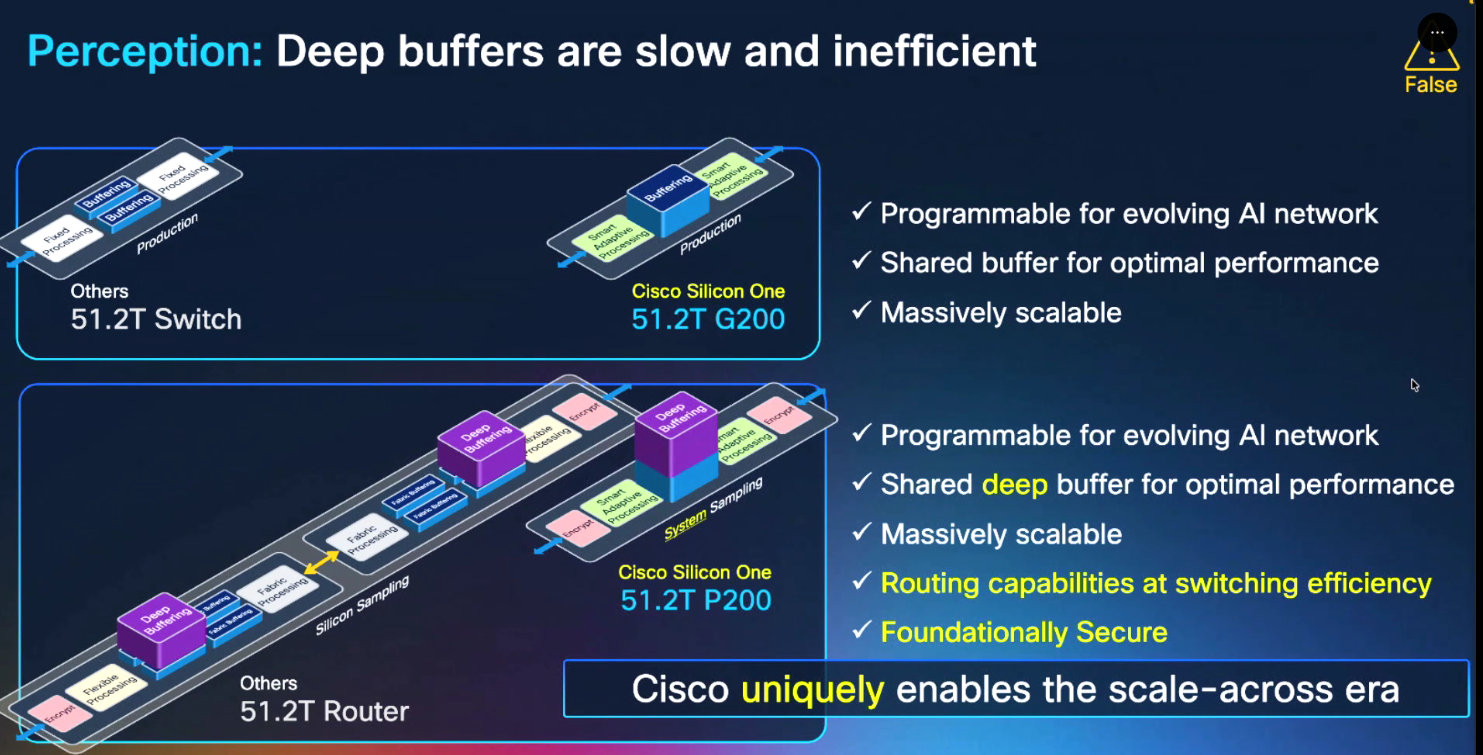Cisco's Silicon One P200: Transforming AI Data Center Connectivity
Cisco unveils Silicon One P200, challenging Broadcom in AI data center connectivity with a unified, power-efficient solution, enhancing scalability and performance.

Cisco's Silicon One P200: Transforming AI Data Center Connectivity
On October 8, 2025, Cisco Systems Inc. unveiled its Silicon One P200, marking a significant push into the AI data center connectivity market. This move is poised to challenge Broadcom, a major player in this space, by offering a unified, power-efficient, and highly scalable networking solution. The Silicon One P200 is designed to revolutionize long-distance AI data center connectivity, enabling tech giants and startups alike to optimize resource utilization and build more resilient AI infrastructures.
Cisco's aggressive entry into this market is driven by its strategic partnerships, notably with Nvidia, and its focus on reducing power consumption while enhancing performance. The P200's integration into Nvidia's Spectrum-X platform for Ethernet AI networking further solidifies Cisco's position in the industry. This development could disrupt traditional AI networking architectures, shifting from "scale-up" and "scale-out" methodologies to a "scale-across" approach for distributed AI workloads.
Key Features of Silicon One P200
- Unified Architecture: The Silicon One P200 boasts a consistent chip family across various network roles, ensuring operational simplicity and scalability.
- Energy Efficiency: The 8223 router, part of the Silicon One ecosystem, consumes 65% less power than its predecessors, setting a new benchmark for energy efficiency.
- Performance and Security: The P200 offers exceptional performance and integrated security features, providing a compelling advantage in the expanding AI infrastructure market.
- Strategic Partnerships: Cisco's collaboration with Nvidia underscores its commitment to offering end-to-end Ethernet solutions, potentially challenging the dominance of InfiniBand in high-performance AI clusters.
Background: The AI Data Center Landscape
The AI data center landscape is rapidly evolving, with hyperscalers and cloud providers like Microsoft Azure and Alibaba seeking to optimize their AI workloads. These companies require seamless connectivity across distributed data centers, often spanning hundreds or thousands of miles. Cisco's Silicon One P200 addresses this need by enabling the connection of AI clusters over long distances, thereby enhancing resource utilization and reducing operational costs.
Competitive Landscape
Cisco's challenge to Broadcom is significant, as both companies are major players in AI networking. Broadcom's Jericho chip also targets multi-site AI connectivity, but Cisco's unified architecture and strategic partnerships may offer a more comprehensive solution. The competitive implications are substantial, with Cisco poised to disrupt traditional AI networking architectures and potentially force other vendors to accelerate their efforts in energy efficiency and scalability.
Industry Impact
The introduction of the Silicon One P200 and its integration into Nvidia's Spectrum-X platform could have far-reaching implications for the AI industry:
- Disruption of Traditional Architectures: By focusing on "scale-across" distributed AI workloads, Cisco challenges the traditional "scale-up" and "scale-out" methodologies. This shift could lead to more efficient and resilient AI infrastructures.
- Energy Efficiency and Sustainability: The significant reduction in power consumption sets a new standard for energy efficiency in AI data centers, potentially influencing sustainability efforts across the industry.
- Market Positioning: Cisco's strategic partnerships and unified architecture position it as a strong competitor in the AI networking market, challenging Broadcom's dominance.
Future Outlook
As the AI industry continues to grow, the demand for efficient and scalable networking solutions will increase. Cisco's Silicon One P200 is well-positioned to meet this demand, offering a powerful alternative to existing solutions. The challenge to Broadcom and other competitors could lead to a race in innovation, driving advancements in AI data center connectivity and potentially reshaping the industry landscape.
Conclusion
Cisco's launch of the Silicon One P200 marks a pivotal moment in the AI data center connectivity market. With its focus on scalability, energy efficiency, and strategic partnerships, Cisco is poised to challenge traditional leaders and redefine the future of AI networking. As the industry continues to evolve, the impact of this technology will be closely watched, with potential implications for sustainability, performance, and market dynamics.
Relevant Images:
- Cisco Silicon One P200: Official product images from Cisco's press releases or announcements.
- Nvidia Spectrum-X Platform: Screenshots or diagrams illustrating the integration of Cisco's Silicon One into Nvidia's platform.
- Cisco and Nvidia Logos: Official logos of Cisco and Nvidia to highlight their strategic partnership.
- Data Center Infrastructure: Visual representations of AI data centers and their connectivity needs.
Note: The images should be directly related to the main topic and sourced from official announcements or press releases to ensure accuracy and relevance. Unfortunately, specific images cannot be embedded in this response, but they can be found through official Cisco and Nvidia announcements.